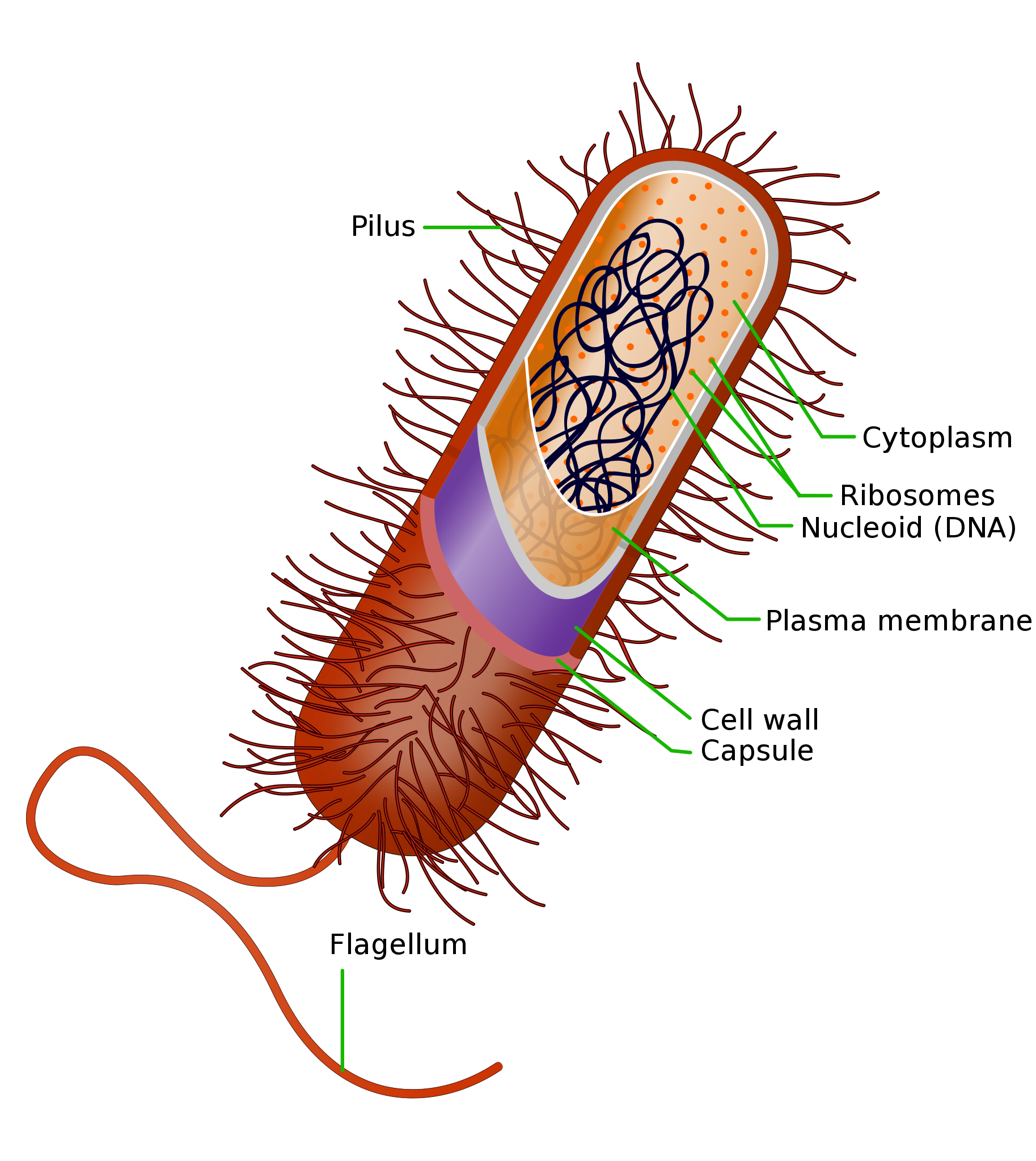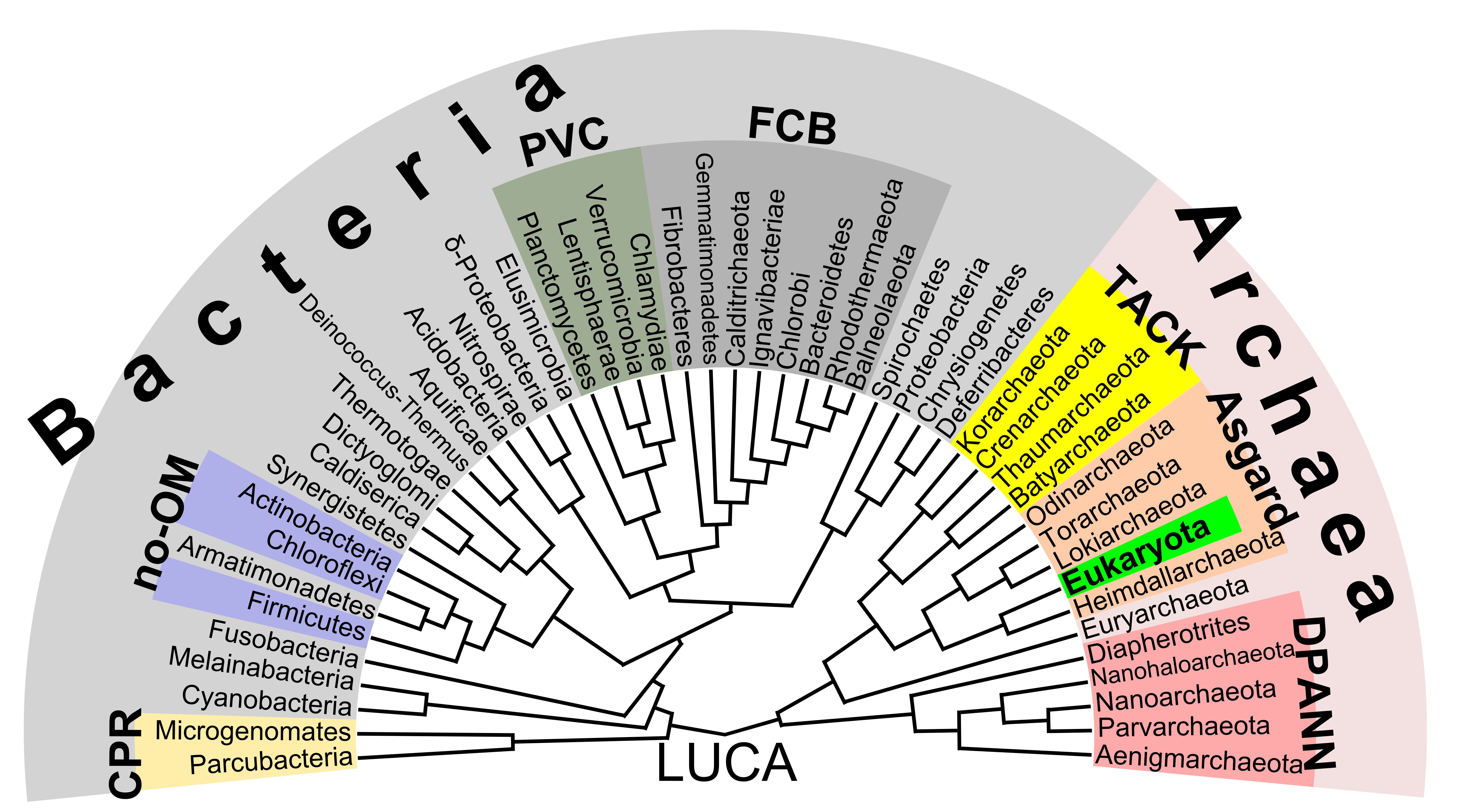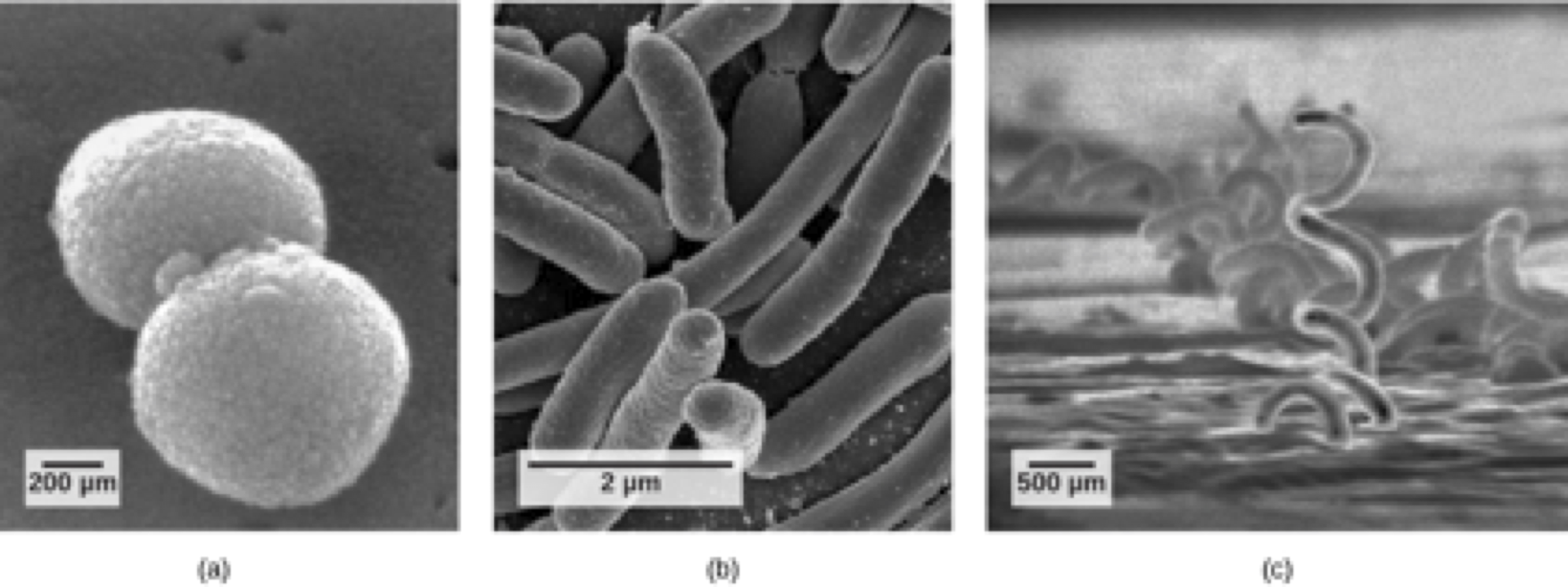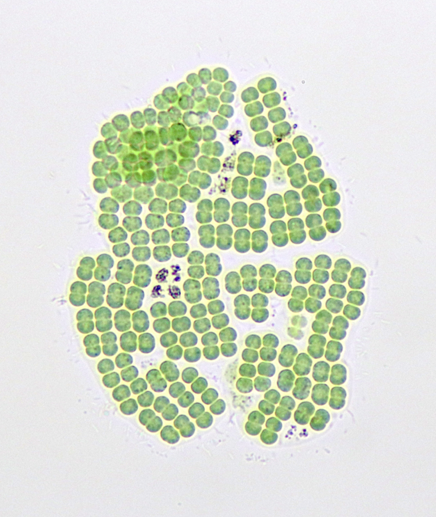Prokaryotes – Background
Introduction to Prokaryotes
Prokaryotes are single-celled organisms of Domain Bacteria and Domain Archaea. They are generally small, typically 0.2-5.0mm, although larger prokaryotic cells exist. Prokaryotes have four components shared by all cells – plasma membrane, cytosol, DNA, and ribosomes. However, they lack nuclei and other membrane-bound organelles. Other cell structures may be present. For example, fimbriae, which allow attachment to other cells or the substrate, are present in many proteobacteria, while some cyanobacteria have gas vacuoles for buoyancy control.

Prokaryotes are a critical component of all ecosystems. They are present in soil, in the oceans, and in freshwater environments. Additionally, a significant number of species are symbiotic, meaning they live in close association with other organisms. Humans have trillions of prokaryotic cells living on and in them. Some prokaryotes are mutualists, beneficial to their host, others are commensal, and many are parasitic, living at the expense of their host organism. Some parasitic bacteria are pathogens, or disease-causing agents.
| Types of Symbiosis | |
| Mutualism | Both partners benefit from the interaction |
| Commensalism | One partner benefits; the other is unaffected by the interaction |
| Parasitism | One partner benefits; the other is harmed by the interaction |
Prokaryotes play a crucial role in nutrient cycling. The carbon cycle is dependent on fixation of carbon dioxide from the atmosphere, which is mainly accomplished by photosynthetic prokaryotes and eukaryotes. Carbon dioxide is returned to the atmosphere by decomposition of organic matter by decomposers, which are mainly bacteria and fungi. Prokaryotes are also essential to the nitrogen cycle. Nitrogen-fixing bacteria, for example, transform atmospheric nitrogen into ammonia, which can then be used by plants.
Prokaryote Evolution
Prokaryotes were the first organisms to live on earth. The fossil record indicates that they were present at least 3.5 billion years ago, although geochemical evidence suggests that they may have evolved much earlier.
Biologists classify life according to characteristics thought to be shared due to common ancestry. The largest and most inclusive taxonomic rank is called a. Two of the three domains of life – Bacteria and Archaea – are comprised of prokaryotes. The third, Eukarya, includes organisms with eukaryotic cells, and will be considered in later labs.
Bacteria and Archaea are both considered to be prokaryotes, and share some morphological characteristics. However, they are genetically and biochemically distinct.

Archaea
Archaea are considered a unique Domain of life, along with Bacteria and Eukarya. They were originally classified as bacteria, but reclassified as a separated domain based on information obtained from DNA sequencing and careful observation of cellular structure. The classification of Archaea is an ongoing and difficult endeavor. It is complicated by the fact that most Archaea cannot be cultured in a laboratory setting, and are only known from environmental DNA sequencing. However, today we will be working with an archeon that is easy to culture – Halobacterium sp.
Many Archaea are extremophiles, living in environments that are hostile to most organisms. These include thermophiles, which tolerate high temperatures, halophiles, which inhabit environments with high salinity, and acidophiles, which live in highly acidic conditions. Not all Archaea, however, are extremophiles. They are also found in soil, the ocean, and inside other organisms. In fact, most Archaea are mesophiles. Like bacteria, some are mutualists or commensals. No known Archaea are parasites, although there may be undiscovered archaeal parasites.
Bacteria
Bacteria are extremely diverse. There are many different groups of bacteria, including large clades that are known only from environmental sequencing. We will consider some of the major clades this week and next: proteobacteria, spirochetes, gram-positive bacteria, and cyanobacteria. Bacteria come in many shapes, but the three most common are cocci (spherical), bacilli (rod-shaped), and spirilli (spiral-shaped).

Bacterial Diversity
Bacteria are an extremely diverse clade. Bacterial phylogeny is under active investigation and revision. As of today, there are about 30 phyla of bacteria that are known from cultured specimens, but this number is constantly being revised as new genomes are sequenced and analyzed. To complicate things further, there are whole phyla of bacteria that are unculturable and are known only through environmental sequencing.
Proteobacteria
Proteobacteria are a large and extremely diverse group. More than a third of described species of bacteria are classified as proteobacteria. They are all Gram-negative but vary widely with regards to metabolism, use of oxygen, and morphology.
Alphaproteobacteria
There are about 1,000 species. Most species are obligate or facultative aerobes. Some are free-living; others are symbionts. Some species, such as members of the genera Rhizobium and Agrobacterium, form root nodules and fix nitrogen. Others, such as Rickettsia and Wolbachia, are obligate intracellular parasites. In addition, mitochondria most likely evolved from alphaproteobacteria.
Betaproteobacteria
There are about 500 species, including some important human pathogens. These include Neisseria gonorrhoeae, which is the causative agent of gonorrhea, and Bordetella pertussis, which causes whooping cough.
Gammaproteobacteria
There are more than 1500 species including many important human pathogens. Escherichia coli, which inhabits the gut and is widely used in laboratory settings, is a gammaproteobacteria, as are its close relatives Salmonella and Shigella. Other representatives include Yersinia pestis, the cause of bubonic plague and Vibrio cholerae, which causes cholera.
Deltaproteobacteria
Deltaproteobacteria is a small group, containing mainly sulfate- and sulfur-reducing bacteria as well as myxobacteria, which can aggregate and move together in swarms.
Epsilonproteobacteria
This small group includes free-living and parasitic bacteria, including Campylobacter and Helicobacter. Helicobacter pylori causes ulcers in humans.
Spirochetes
Spirochetes are a group of about 3500 species that is unique in morphology. These bacteria contain endoflagella, flagella that are present between the plasma membrane and the outer membrane. Like normal bacterial flagella, these move in a corkscrew motion, and allow the spirochete to burrow into tissues. (Note that spirochetes is not a synonym for spirilla, which is a descriptor of bacterial shape.) Some spirochetes are free-living, while others are commensals or parasites. Treponema pallidum, for instance, causes syphilis in humans. Borrelia burgdorferi causes Lyme disease.
Gram-positive bacteria
Gram-positive bacteria are a large group, containing close to half of described bacterial species. They are characterized by their thick layer of peptidoglycan in the cell wall, which retains the crystal violet dye used in Gram staining. Gram-positive bacteria used to be grouped taxonomically. However, more recent phylogenetic analysis indicates that Gram-positive bacteria are not a monophyletic clade. They include the phyla Firmicutes and Actinobacteria. Some are free-living, while others are symbionts. Many human pathogens are Gram-positive, such as Staphylococcus aureus, Streptococcus pneumonia, and Bacillus anthracis.
Chlamydiae
All members of Phylum Chlamydiae are obligate intracellular parasites. Three species infect humans; other species infect a wide variety of eukaryotes. Chlamydia cells are extremely small cocci, often less than 0.5 mm in diameter. Their genomes are also extremely small, about 500-1500kb in size. This is typical of obligate intracellular parasites, which rely on their host cell for basic metabolic function.
Cyanobacteria
Cyanobacteria is a distinctive and ancient bacterial clade (commonly recognized taxonomically at the rank of phylum) that includes several thousand species in 150 genera. Some of the oldest fossil prokaryotes are morphologically very similar to modern cyanobacteria. Modern cyanobacteria are ubiquitous and may be found in marine, freshwater, and terrestrial ecosystems. They occur in freshwater to hypersaline aquatic environments, and in polar oceans to geyser basins. During favorable conditions, they may form a “bloom” (i.e. population explosion) resulting in dark bluish-green “pond scum.” Cyanobacteria at high concentration may be toxic, and therefore blooms are of concern in recreational lakes and ponds (such as Utah Lake in recent years).

Cyanobacteria are photoautotrophs that obtain energy from light and fix CO2 as a source of carbon (facultative chemoheterotrophy has been demonstrated in some). Cyanobacterial photosynthetic reactions are similar to those of plants and distinct from those of other photosynthetic prokaryotes. They are the only prokaryotic group with oxygenic photosynthesis (release of O2 by photolysis – splitting of water) and are considered to have been the major source of O2 for the Great Oxygenation Event of the early Earth’s atmosphere. Current evidence strongly supports the endosymbiotic origin of eukaryotic plastids from an ancient cyanobacterium.
Cyanobacteria are common in mutualistic relationships with plants such as hornworts, water ferns, and cycads. They also may be the photobiont in lichens and may be found as a component of cryptobiotic crusts and stromatolites. Some may be found in animals such as sponges or on sloths (for whom they impart cryptic coloration).
Clade features include:
- photosynthetic pigments: include chlorophyll a (primary pigment) as well as carotenoids and phycobilins (secondary pigments). Some cyanobacteria (e.g. Prochlorococcus) contain chlorophyll b. Phycobilin pigments include phycocyanin (blue) and phycoerythrin (red). These pigments often give cyanobacteria (when present in large numbers) a dark blue-green, black, purple, or red coloration. This has led to their common name: “blue-green bacteria.” Pigments are present on stacked thylakoids (flattened membranous sacs).
- energy storage carbohydrates: “cyanophycean starch” – a polymer of α-glucose similar to glycogen.
- gram negative cell walls
- motility: none form flagella, but some filamentous cyanobacteria are able to “glide.” Carbohydrate (slime) secretion has been proposed as a mechanism for gliding, but remains an area of study.
- sheath: a slimy polysaccharide layer of variable thickness (often quite thick) formed to the outside of the cell wall.
- morphological complexity: cyanobacteria may be unicellular, filamentous, or form simple colonies. Some form distinctive cells that have specialized purposes. These include:
- o heterocysts: distinctive cells formed by many cyanobacteria which have thickened cell walls (often with “polar nodules” where they contact other cells in filaments). These develop from “vegetative cells” and are the site of nitrogen-fixing reactions.
- o akinetes: these cells are visually distinctive due to the presence of refractive cyanophycin granules. Akinetes are very resistant to adverse environmental conditions and have been “germinated” after decades of dry storage. Akinetes also develop from vegetative cells.
a short appendage used to attach a bacterium to a surface or to another cell
a close, long-term biological interactions between organisms of different species
a symbiosis in which each partner benefits from the interaction
a symbiosis in which one species benefits from the interaction, and the other is unaffected
a symbiosis in which one species benefits from the interaction, and the other is harmed
an organism that is able to live in an extreme environment, such as extreme temperature, pH, radiation, salinity, pressure, etc.
an organism that can survive and thrive in high temperature environments
an organism that can survive and thrive in high salt concentrations
an organism that can survive and thrive in a highly acidic environment
an organism that thrives in moderate environments
a prokaryote with a spherical or ovoid shape
a prokaryote that is rod-shaped
a prokaryote with a spiral or helical shape

